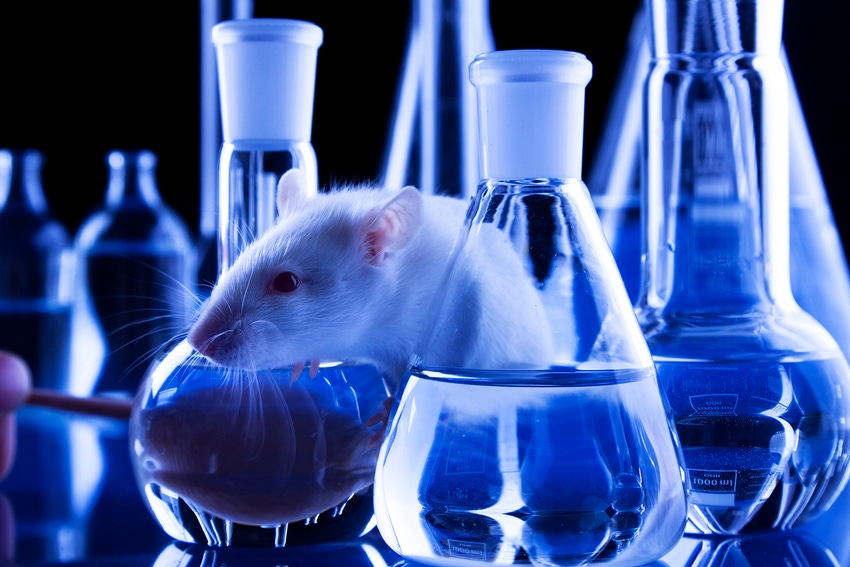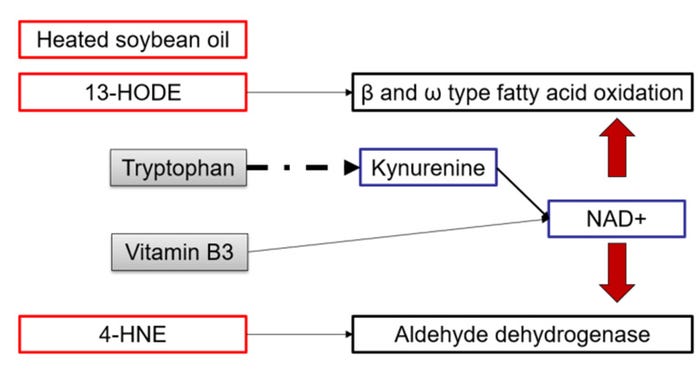An interesting hypothesis came to light that animals consuming oxidized lipids may have a greater requirement for tryptophan.
December 20, 2018

By Pedro E. Urriola, University of Minnesota Department of Animal Science
Dietary lipids (fats and oils) are a cost-effective method for improving feed efficiency of growing pigs. In the feed ingredient market, there are multiple ingredients that may contain lipids (usually measured as crude fat), which contribute to the energy value of the feed ingredient, but that are processed in different manners including heat. These ingredients include distillers dried grains with solubles, high-fat rice bran, distillers corn oil and rendered animal fats (tallow or choice white grease).
However, as we mentioned in past articles (“Fat, oxidation and the swine diet”), lipid quality may be affected by a multitude of factors including environmental temperature, moisture and heat treatment. A large portion of lipid deterioration during processing or storage is due to oxidation of lipids. These oxidized lipid products will increase oxidative stress to farm animals.
Our group at the University of Minnesota has investigated methods to quantify the impact of feed ingredients with various levels of lipid oxidation. A common observation in our feeding experiments is that pigs consuming oxidized lipids have less feed intake than pigs consuming a similar amount of high-quality lipids. This decrease in feed intake agrees with observations among 23 comparisons in the literature, which suggest a 6% decrease in feed intake when pigs consume oxidized lipids. To investigate what metabolic events may lead to a decrease in feed intake and growth performance of pigs, we used mice as a model for swine and a technique called metabolomics using liquid chromatography-mass spectroscopy.
We model the heat treatment of lipids in feed ingredients by heating soybean oil at 185 C for six hours. We characterized the type of lipid oxidation products in heated soybean oil and observed that a compound called 13-hydroxyoctadecadienoic acid was 40 times more abundant in heated soybean oil than unheated control soybean oil. Likewise, HSO contained 4-hydroxy-2-nonenal 40 times more than control soybean oil. These two compounds (13-HODE and 4-HNE) have been described to be toxic if consumed in significant amounts.
This heated soybean oil was fed to growing mice for 28 days. We observed a decrease in growth and feed intake that was in a similar magnitude as observed in pigs. We then collected tissues from all mice and observed that mice consuming heated soybean oil had a multitude of metabolic events different from mice fed control soybean oil (these metabolic events are simplified in Figure 1). To deal with toxic compounds in heated soybean oil, mice had to use nicotinamide adenine dinucleotide as a cofactor for two primary functions: fatty acid oxidation and aldehyde dehydrogenase. Mice, like pigs, can obtain NAD directly from the diet (as vitamin B3 or niacin) or from catabolism of the amino acid tryptophan. We observed that multiple metabolites of tryptophan catabolism were present in tissues of mice consuming HSO in greater concentration than in mice consuming CSO.

Figure 1: The summary that describes the role of the tryptophan catabolism pathway in mice consuming oxidized lipids (adapted from Wang et al. [2018] J Nutr Biochem 57:255-267).
We developed the hypothesis that tryptophan is being catabolized for production of NAD, which is in high metabolic demand in mice consuming oxidized lipids. This leads to an interesting hypothesis that animals consuming oxidized lipids may have a greater requirement for tryptophan.
In summary, mice consuming 13-HODE and 4-HNE (products in oxidized soybean oil) had significant catabolism of the amino acid tryptophan which may be utilized to cover the demand for NAD. This NAD is a cofactor implicated in two major detoxification pathways (lipid oxidation and aldehyde dehydrogenase). This demand for tryptophan suggests that mice may have a greater requirement for tryptophan.
You May Also Like



